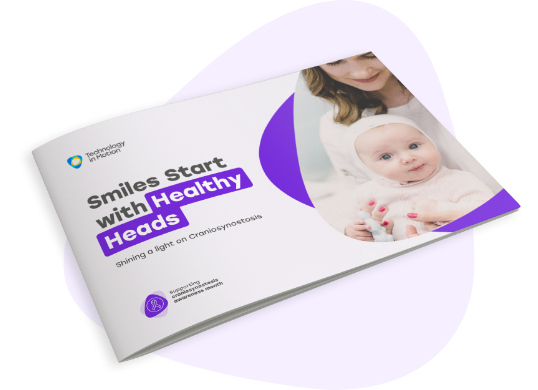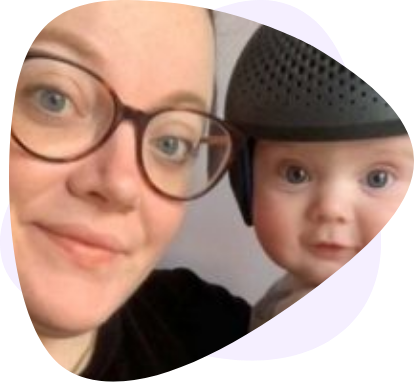Shining a light on craniosynostosis
Since 1993, we’ve led the world in cranial orthotic treatment, using advanced orthotics overseen by top clinicians to treat babies with flat head syndrome and craniosynostosis.
Helping you understand craniosynostosis
You can find everything you need to know about craniosynostosis with our comprehensive guide. From understanding the condition and its treatment options to finding emotional support and resources for awareness, this guide provides knowledge and practical advice to navigate this rare condition effectively.

Download our guide to craniosynostosis
Whether you’re a parent or carer of a child diagnosed with craniosynostosis, concerned about your or a loved one’s child, or simply seeking to educate yourself, we’ve compiled some straightforward information to help.
Complete this form to download a copy of our guide.

TiMbandAir CS
The TiMBandAir CS is a post-operative helmet for babies with craniosynostosis.
We partner with specialist craniofacial clinics to provide treatment for babies following their endoscopic surgery. Our custom helmets gently guide your baby’s head to naturally correct itself as your little one grows.
Light, breathable, eco-friendly and custom-fitted, the TiMBandAir CS is designed for hygiene and comfort during long hours of wear.
Our expert orthotists oversee all treatment, providing support throughout.
Arthur was diagnosed with craniosynostosis in the first few months of his life.

The early fusion of one of the sutures in his skull was causing his head shape to deform with some facial deformation as well. Arthur’s craniofacial surgeon successfully used newly introduced minimally invasive surgery to release the suture, followed by ongoing treatment with the TiMBandAir CS to guide Alastair’s head shape to grow into a normal shape. By wearing the TiMBandAir for 23 hours a day, Arthur made remarkable progress in his recovery. His parents reported noticeable improvements in his head shape, development, and confidence.
Arthur’s Mum Daisie spoke to BBC Sounds about Arthur’s journey, turning an important spotlight on this little-known condition and the importance of awareness and early intervention.